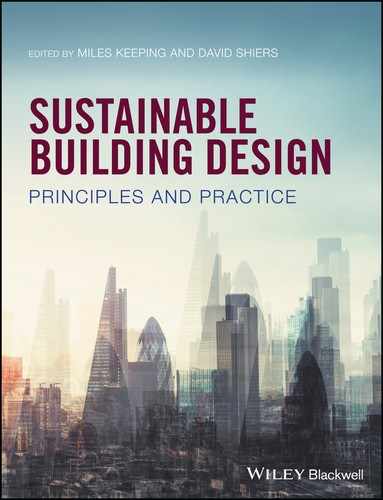Index
- a
- air conditioning
- air quality
- alternative fuelled vehicles
- anaerobic digestion
- Arup Integrated Urbanism
- Arup, Ove; Key Speech 1970
- and partners
- story (see Appendix A)
- b
- Barcelona
- Bath
- BedZED
- ‘best value’
- Better Buildings Partnership report on Operational Energy Use
- Bicester Ecotown
- biofuels
- biomass
- Blue Angel
- Booth poverty map
- Bourneville
- British Land and Ropemaker place
- British Land’s Sustainability Brief
- Broadgate development, London
- building construction; short history
- building envelope
- Building Management System (BMS)
- building materials
- Building Research Establishment Environmental Assessment Method (BREEAM)
- building services
- business case for green buildings
- business parks
- c
- Candlestick Point, USA
- carbon emissions
- Carnevale’s Ideal City
- car parking
- cavity walls
- Cerda’s Barcelona and General Theory of Urbanisation
- Chain of Custody
- Citi Data Centre, Frankfurt, Germany
- Climate Change
- Act
- adaptation
- contribution to
- Levy
- mitigation
- regulation
- Combined Heat and Power (CHP)
- comfort of building occupiers
- computer room air conditioning (CRAC)
- construction costs
- construction materials. see Building materials
- cooling
- Corporate Social Responsibility (CSR)
- Curitiba
- curtain walling
- d
- Damp Proof Course (DPC)
- ‘design and build’
- design process, xi
- Display Energy Certificates (DECs)
- Dixon, Jeremy
- drainage systems
- Druk White Lotus School, Ladakh
- e
- Ebbsfleet station
- Ecoinvent environmental impact database
- Ecotowns
- Edinburgh New Town
- electric cars
- embodied environmental impacts
- energy
- energy performance certificates (EPCs)
- environmental assessment
- environmental impacts of building elements
- environmental legislation (EU)
- environmental product declarations
- environmental services
- Environmental, Social and Governance (ESG)
- Essex Design Guide
- EU Directive 2002/91/EC on energy use in buildings
- EU emissions reduction targets
- f
- Façade design
- flat roofs
- floor construction
- floor finishes
- Forest Stewardship Council (FSC)
- framed construction
- g
- Garden City
- Geddes, Patrick
- glazing and windows
- global warming
- green badging
- ‘green building’; definition
- Green Guide to Specification
- greenhouse gas (GHG) emissions. see Greenhouse gases
- greenhouse gases
- green roofs
- Green Star
- green value
- ground floor construction
- ground source heating and cooling
- h
- Haussmann’s Paris plans
- Hazardous and Deleterious Materials
- health
- public
- risks
- and safety
- wellbeing
- heating systems
- heating, ventilation and air conditioning (HVAC) design
- Hermes Investment Management
- High Speed Rail Link 1 (HS1)
- Home Quality Mark
- Howard, Ebenezer
- i
- industrial revolution, public health issues
- Integrated Workplace Performance tool
- j
- Jakriborg, Sweden
- Jones Lang LaSalle (JLL) report on operational energy
- Juran, J. (Quality Spiral)
- l
- Land Securities GHG emission reduction targets
- Large Urban Distressed Areas (LUDA)
- Leadership in Energy and Environmental Design (LEED)
- Le Corbusier
- LEED‐ND, neighbourhood development
- Letchworth Garden City
- Life Cycle Assessment (LCA)
- London 2012 Olympics
- m
- Maia’s Lisbon plan
- ‘Making green pay’ Arup
- Managing Agents Sustainability Toolkit
- master planning
- materials used in construction. see building materials
- mixed mode ventilation
- model villages
- modernism
- n
- NASA Engineering Design Process
- National Planning Policy Framework (NPPF)
- neighbourhood patterns
- new cities of the 20th century
- ‘New Liberalism’
- new settlements
- ‘New Urbanism’
- noise pollution
- NOMA, Manchester
- o
- occupier comfort. see comfort of occupiers
- p
- Paris Climate Change Agreement
- Passivhaus
- performance gap
- philanthropic industrialists of the 19th century
- photovoltaics
- pitched roofs
- Plantation Place, London
- pollution. see air quality, noise pollution, water pollution
- Port Sunlight
- post‐modernism
- post‐occupancy evaluation
- Poundbury, UK
- Preston Beach, Western Australia
- property valuation
- Public Health Act
- public realm
- q
- Quality Spiral
- r
- Radiant City, Le Corbusier
- railways
- regeneration
- renewable energy sources (RES)
- road‐rail parallel layout
- road traffic increase
- roof construction
- Ropemaker Place, London
- Royal Town Planning Institute (RTPI)
- s
- Saltaire
- Sankt Eriksomradet, Stockholm
- science‐based GHG targets
- Sheffield’s Park Hill estate
- SKA rating system (RICS)
- Sky TV studio
- Socio‐Technical Systems (STS) approach and tool
- space planning requirements
- steel frames
- Stockley Park
- Stratford station
- structural design considerations
- Sustainable Project Appraisal Routine programme (SPeAR)
- Sustainable Urban Drainage Systems (SUDS)
- t
- Tel Aviv town planning
- thermal comfort
- Total Architecture
- Town Planning Act 1909
- town planning in the 20th century
- town planning origins
- traditional construction materials
- transportation
- impacts
- master planning
- materials
- public
- u
- unified design principles
- Urban Growth
- Urban Renewal in history
- v
- valuation
- value engineering
- ventilation in buildings
- w
- Walkable streets
- Wanzhuang, China, eco‐city
- water pollution
- wave and hydropower
- waveform ceiling design at Ropemaker Place
- window design
- wind turbines
- Wren’s London plans
..................Content has been hidden....................
You can't read the all page of ebook, please click here login for view all page.
